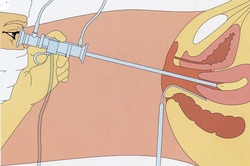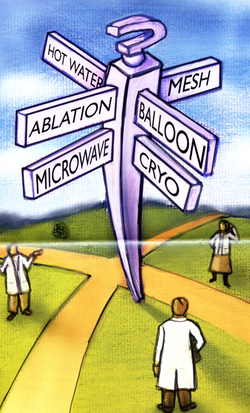
It allows the investigator to look for polyps or fibroids or abnormalities within the womb
- Heavy menstrual bleeding
- Uterine abnormalities
- Polyps
- Fibroids
Because of the advances in technology it is now possible to perform these procedures in a day case setting without general anaesthetic. 95% of women find this approach acceptable. For some women a general anaesthetic may be required. A choice is usually offered depending on the pathology that needs to be investigated and the woman’s wishes
The advantage of having it without a general anaesthetic means that women can walk in and out of the procedure room and resume normal activities.
All they need is to recover from the procedure rather than both the procedure and an anaesthetic. It also means that they are present and can look at the monitor whilst the diagnosis is being made, and be involved in the process.
During the procedure you will be placed on a special couch so that the neck of the womb becomes easily assessable. Once the telescope is inserted into the vagina fluid is used to distend the womb to allow the inside of the womb to be visualized.
It may be necessary to take a biopsy of the lining of the womb during the procedure or for women with small polyps or fibroids it may be possible to remove them at the same “sitting”
The procedure is generally straight forward complications can occur in the minority of women. One of the commonest is making a small hole in the womb. If this were to happen and the doctor is sure there are no other complications the procedure is abandoned.
There may be some crampy like pain after the procedure akin to period pain. Mild painkillers are usually sufficient, and it is probably best to take the rest of the day off.
Another possible complication is pelvic infection, which is easily treated with antibiotics. It is important that if you develop a discharge or ongoing pelvic pain for 48 hours or more it is best you consult your medical team.









 RSS Feed
RSS Feed